#36 DHARMA EYE: Part Two—Framing the Sacred
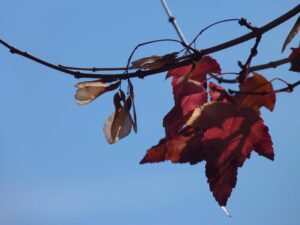
A fundamental element to my practice of taking pictures, particularly of the natural world, comes from the perceptual sense that I could take a thousand pictures standing in one spot—that everything I see constitutes an organic artfulness that doesn’t require fashioning. What the eye can see has limitless variety, thus the natural world (and for that matter, the phenomenal world) comprises self-existent, spontaneous art. I certainly don’t have to do anything to make it be that way; it merely requires having the eyes to see it.
Of course, the mind can be quite in the way of that, but umpteen years of meditative discipline provide it to me rather easily, at least as soon as I shift my attention off the current discursive knots my mind wants to tie itself in. Diminished internal obsession yields the variegated luminosity at play all around me. It doesn’t need to be anything extraordinary. It could amount to some leaves on the ground.
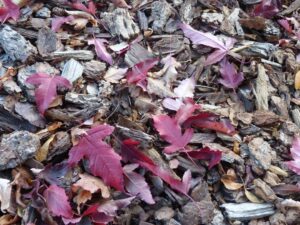
Yet those leaves have their own interactive edges and textures. They appear within space, and in this case the space is the ground.
But if everything’s so artful, why take a picture or write a poem? You could say that’s simply trying to collect it, hold onto it, freeze it in a vain attempt to hold off its temporal mortality. It’s drawing attention to the artist, who, after all, seems to have something to gain, and if possible, something to monetize.
But that’s all ass-backwards, from the dharma art perspective. The dharma eye sees what it sees (Allen Ginsberg: “Notice what you notice”), and artistic expression becomes a matter of exploration and joy. It’s what you discover about the world by putting a frame around it. Do you need to do it? No, not really, because what you’re expressing already surrounds us. We’re almost drowning in it. And yet…if there’s a larger purpose, it’s to show us what we so often miss, trapped in the 2.5×6 inch screen in our hand, and the always burdened, over-stuffed screen in our mind.
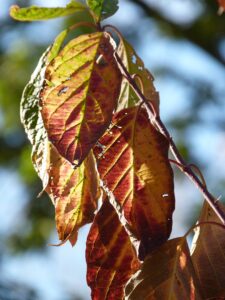 Much of what happens in the course of clicking a shutter relies on the limitations and capabilities of the gadget you’re employing. It can’t see everything the eye sees, so many (most?) photos become quite impossible. On the other hand, it can see things the eye doesn’t—zoom in on them and shift around what the frame can hold–adjust to the light in its own way. The frame defines what’s inside it, seemingly. But here, maybe, we arrive at some philosophy of the frame, as to what constitutes what’s defined, and does that definition stay within the frame as such?
Much of what happens in the course of clicking a shutter relies on the limitations and capabilities of the gadget you’re employing. It can’t see everything the eye sees, so many (most?) photos become quite impossible. On the other hand, it can see things the eye doesn’t—zoom in on them and shift around what the frame can hold–adjust to the light in its own way. The frame defines what’s inside it, seemingly. But here, maybe, we arrive at some philosophy of the frame, as to what constitutes what’s defined, and does that definition stay within the frame as such?
Not everyone would agree with me I don’t think (like post-modernist poets in love with “opacity”—are they still around?), but I’m inclined to say that pretty much any meaningful fine art resonates beyond what it happens to reveal, even if what it does reveal seems incredibly fulsome and extravagant in some way. As in a haiku, there can be a lot in a little.
Chogyam Trungpa on photography:
“We have a square camera with a square perspective, and as we wind our film we see one square after another. That squareness seems to be our general frame of reference. But we don’t have to be too concerned with that squareness—we could dance with it. Let’s view that corner, this corner, this corner and that corner. Above we could allow lots of space; at the bottom we could allow a lot of solidity; on the sides we could play with how we view our world. If the world is pushing us to the left or the right, we could go along with that. As long as we don’t fight, there’s no problem. We could have the right invading our left; that’s okay, that’s a nice picture. If the left is invading our right, that also makes a nice picture.”
“As long as we don’t fight, there’s no problem.” That’s the relaxation involved vs., say, some artist’s sturm und drang. Or, from another angle altogether, the artistic pursuit of symmetrical beauty. Better Homes & Gardens never really likes to show you asymmetry or frank decay. It doesn’t see the beauty in it. I’m not saying they need to put some moldering nosegay in a vase and photograph it on the polished ebony surface of a baby grande piano (though now that I’m thinking about it, that might be worth a shot…), but something like that violates their beautifying aesthetic. That’s what they don’t want to see at all, much less look for the artfulness in the decay.

Not that I’m against that kind of beauty they favor, mind you, I just don’t want to be limited to it.

Chogyam Trungpa: “The basic principle of photography from that point of view is viewing things as they are in their own ordinary nature….We are just dealing very precisely and directly with how our perception or vision works as we look at an object and how our mind changes by looking at it.”

In fact, I would go so far as to say that putting a frame around things is what we already do, we just spend as much on framing out as framing in, i.e., we don’t want anything interfering with our fixed frame of reference, and if the perceptions coming in aren’t cooperating somehow with what we want to see and believe, positively or negatively, we place our conceptual frame to filter out our habitual aversions or everything we regard as unimportant to us. Simply attending to what we do happen to perceive, whether we like it, don’t like it, or don’t care, mitigates this largely unconscious filtration system congealed in consciousness, and thus gives us a rather different ground for what to place a frame around.
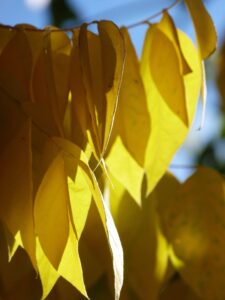
Personally, I’m still interested in beauty, a kind that’s within the eye’s boundaries, and what the eye finds if it really starts to pay attention. It’s entirely possible I owe a great debt to modern painters who softened then exploded the boundaries of ordinary objects into abstraction. A watershed experience for me came circa my time at Naropa in 1981, when Richard Gilbert, then another poetics department student, had a book from the massive Pablo Picasso retrospective at the Museum of Modern Art in New York, something he was lucky enough to attend personally.
What always stuck with me was Picasso’s baseline kind of representational painting, including very early on an accomplished realism, only to find some direction to break it down as far as he could break it down into its base elements, to return again to some more representational style, only to break this down in a new way. This epic adventure started in the late 19th century and continued, I’d say, until the forties, when he finally stopped finding new ways to paint and worked in some of the modes he’d already established. Utterly extraordinary, the many, many places he took it all. For that amazing ride, I’ll always be grateful. As much as anyone in history, he saw art as an adventure.
Well, I’m a good deal more boring as a photographer, though I do visually sense my way toward abstraction, and maybe abstraction–to the visual artist—is a way to get back into the essential structures of light.
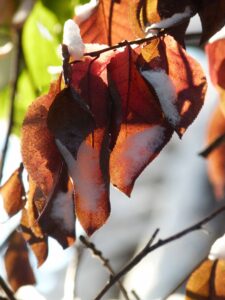
It’s always in some measure mysterious as to what constitutes art (in any media) that crystallizes something living. Trungpa Rinpoche would say that it’s the nakedly felt nowness of the present moment that such art retains. One can feel that nowness hundreds or thousands of years later. It’s how good poetry comes to outlive its era. About a year after I got my B.A. in Poetics at Naropa, I remember when I started to write poems I still liked a year later. That’s the best test of quality.
But what is it that we’re talking about that survives in the art? We framed something, and now it has a life of its own. There’s a dark hole right at the center of the most dense, claustrophobic detail. Conversely, surprisingly, that’s where the light comes from.
We’re cutting out of the mercurial fabric of perception something that is, after all, its own perception. It’s not merely what the eye/mind saw, it’s now a perception in its own right, framed in another medium, fixed in place–but if it’s any good, it’s living and breathing. Whatever got photographed, that’s long gone.
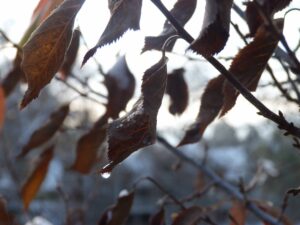
(Next Time, #37 DHARMA EYE: Part Three: Elegant Decay)
(If you want to see more of these photos, there are three sets on my Facebook page: Oct. 15th, Oct. 23rd, Nov. 7th.)

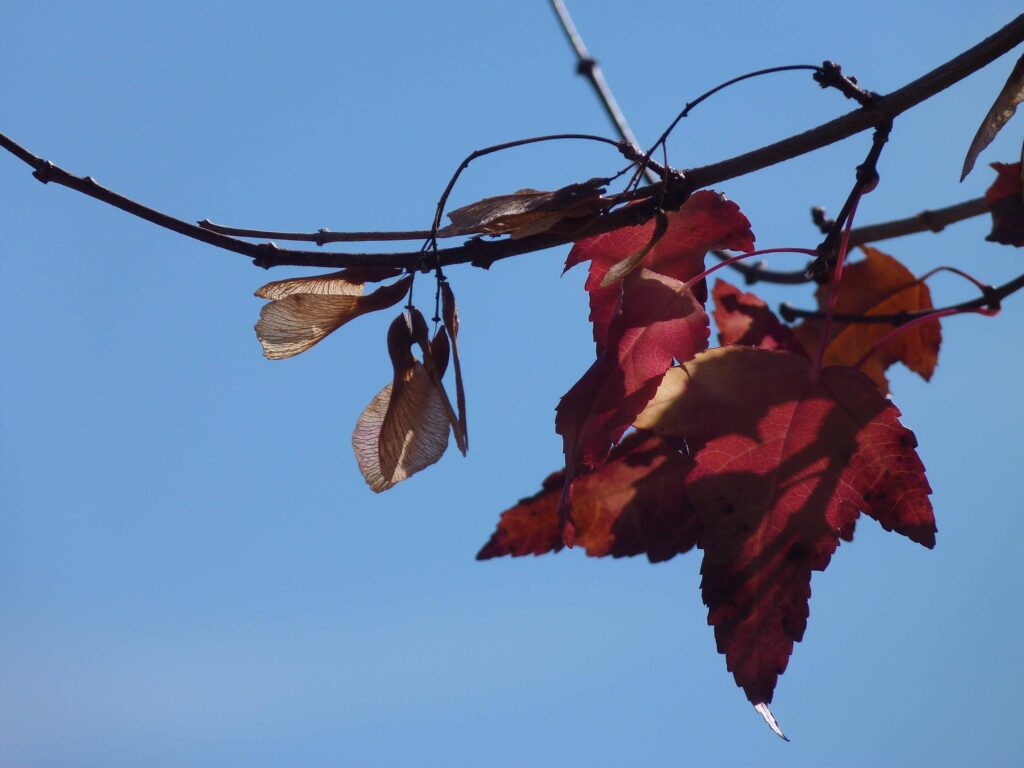
Insight in photography and vice versa. Excellent! Thank you.